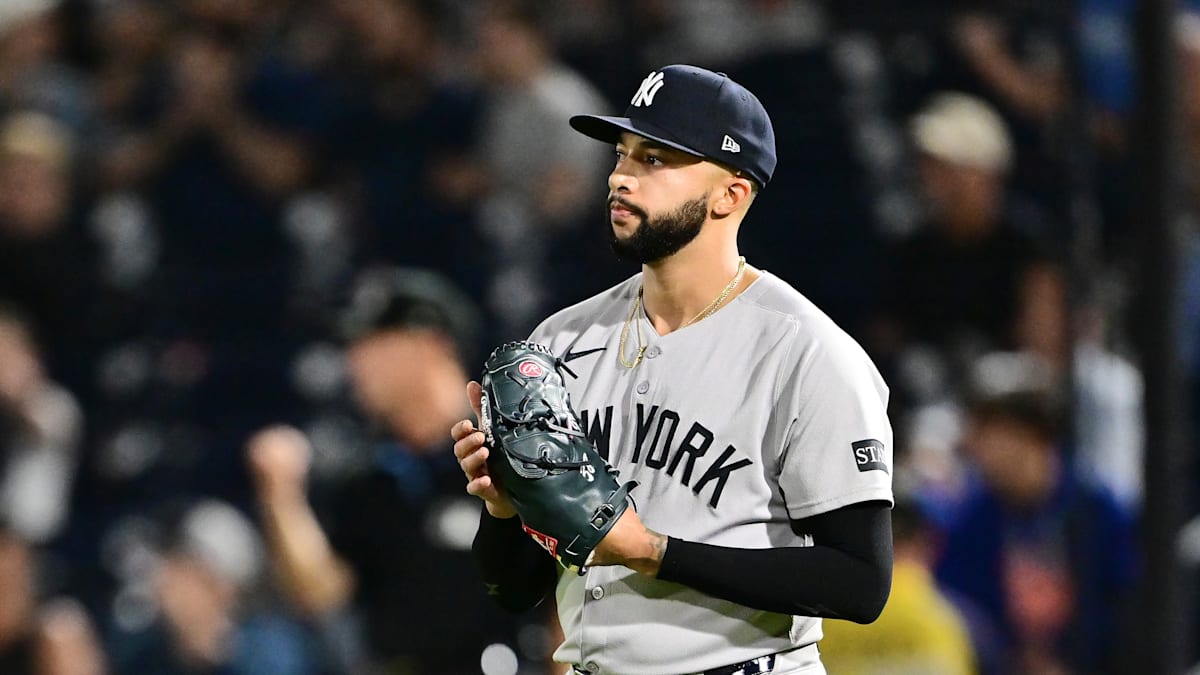When the New York Yankees acquired Devin Williams from the Milwaukee Brewers this offseason, they believed they traded for one of the most dominant relievers in all of baseball. Thanks in large part to his Airbender, a pitch nearly as singular as the great Mariano Rivera's cutter, Williams was coming off three consecutive seasons with a sub-2.00 ERA.

However, through is first nine appearances on the year, Williams has been anything but dominant. His ERA is sitting at 9.00 and his K/9 is down from a 14.15 career average to just 9.00 (while his BB/9 has risen from 4.40 for his career to 7.88). Nearly every time he's taken the mound this season, it has been a cardiac episode for Yankee fans, even if he ultimately emerges unscathed.
The list of possible excuses for the downturn in performance is long. Williams is coming off a back injury that limited him to just 21 2/3 innings pitched last season. He led the charge to convince the Yankees to overturn their draconian facial hair policy. He might still be shellshocked from the home run he served up to Pete Alonso that eliminated Milwaukee from last year's postseason.
Excuses are one thing, but the real cause of his struggles are another. To uncover that root cause, we're going to have to take a deeper look at some of the symptoms he's been experiencing in the early going.
What does the data say about the real reason for Devin Williams' struggles with the Yankees?
While Williams isn't known for having elite velocity, he's typically had more than enough to get by throughout his career, averaging 94.9 miles per hour on his fastball. In 2025, that fastball velocity has dropped just over one mile per hour, down to 93.8.
In addition to his decreased velocity, Williams is throwing significantly more pitches in the zone this year than he has throughout his career, with 48.6% of his offerings finding the strike zone compared to a career average of 43.9%.
Furthermore, Williams is fooling hitters significantly less often so far this season. Batters are swinging at pitches out of the zone just 27.2% versus his career average of 33.7%, and he's seen his swinging strike rate decline from 17.7% all the way down to 9.5%. His last fully healthy season in 2023 saw him post a chase rate of 32.5% and a whiff rate of 41.8%. This year, those numbers are down to 29.2% and 25%, respectively.
In short, Williams is throwing more pitches in the zone and getting fewer chases and swings and misses when his offerings end up out of the zone. As a result, his strike outs are down, his walks are up, and his giving up more contact (and more solid contact) as he leaves more pitches over the plate.
While not drastic, there has been some change in the movement of his signature changeup. In 2024, the pitch averaged 42.3 inches of vertical drop and 19.4 inches of horizontal break to his arm side. This year, it's averaging 41.5 inches of vertical drop and 20.6 inches of horizontal break, making it a bit flatter.
The subtle change in movement combined with a drop in fastball velocity and more pitches landing in the strike zone would seem to indicate one of two things, or perhaps a combination of both. For one, perhaps something mechanical is going on with Williams that has led to these changes, making him more hittable as his pitches are easier to identify. That can explain the increase in walks.
Or maybe he's dealing with some sort of injury that has affected both his velocity and movement. You never know.
Remember, Williams dealt with a back issue last season, and, unfortunately, sometimes there are lingering effects. Whatever the case, Williams will have to figure out how to return to his dominant form and right the ship quickly if the Yankees have any hope repeating (and improving upon) last season's deep postseason run.



